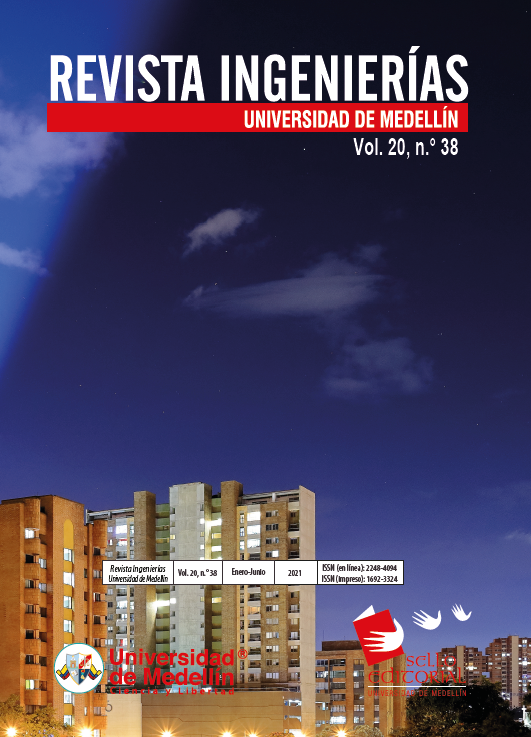Methodological Approach and Technological Framework to Produce a Massive Open Online Course (MOOC) in Biodegradable Packing
Main Article Content
Abstract
This article shows the different stages used for the design and production of a MOOC for biodegradable packing, the planning tools and methodologies used for the development of the themes and contents. Likewise, is shown the technological framework used making a surveillance technology to identify which stage the MOOC e-learning tech is and the search of terms related to biodegradable packing to identify potential topics. Finally, the software architecture for SELENE is explained and how is deployed in open edX platform.
Article Details
References
C. Alario-Hoyos, M. Pérez-Sanagustín, C. Delgado-Kloos, H. Parada G, M. Muñoz-Organero and A. Rodríguez-e-las-Heras, 'Analysing the Impact of Built-In and External Social Tools in a MOOC on Educational Technologies', Lecture Notes in Computer Science - Springer, 2013. Available: https://doi.org/10.1007/978-3-642-40814-4_2 [Accessed 20th November 2018].
U. Nebrija, Metodología de enseñanza y para el aprendizaje Global Campus Nebrija. [E-book] Available:https://www.nebrija.com/nebrija-global-campus/pdf/metodologia-GCN.pdf, 2016.
J. G. S. Goldie, Connectivism: A knowledge learning theory for the digital age?Med. Teach., vol. 38, n.°. 10, pp. 1064-1069, 2016. DOI: 10.3109/0142159X.2016.1173661
J. A. Ruipérez-Valiente, P. J. Muñoz-Merino, H. J. Pijeira Díaz, J. S. Ruiz, and C. D. Kloos, 'Evaluation of a learning analytics application for open edX platform,' Comput. Sci. Inf. Syst., vol. 14, n.°. 1, pp. 51-73, 2017. Doi: 10.2298/CSIS160331043R
D.Shah., 'By The Numbers: MOOCs in 2019'. Class Central [Online]. Available: https://www.classcentral.com/report/mooc-stats-2019/
C. Alario-Hoyos, M. Pérez-Sanagustín, C. Delgado-Kloos, H. Parada G, M. Muñoz-Organero and A. Rodríguez-e-las-Heras, 'Analysing the Impact of Built-In and External Social Tools in a MOOC on Educational Technologies', Lecture Notes in Computer Science- Springer, 2013. Available: https://doi.org/10.1007/978-3-642-40814-4_2 [Accessed 20th November 2018].
C. Alario-Hoyos, M. Pérez-Sanagustín, D. Cormier, and C. Delgado-Kloos, 'Proposal for a conceptual framework for educators to describe and design MOOCs,' J. Univers. Comput. Sci., vol. 20, n.° 1, pp. 6-23, 2014. DOI: 10.3217/jucs-020-01-0006
C. Alario-Hoyos, M. Pérez-Sanagustín, C. Delgado-Kloos, H. Parada G, M. Muñoz-Organero and A. Rodríguez-de-las-Heras, 'Analysing the Impact of Built-In and External Social Tools in a MOOC on Educational Technologies', Lecture Notes in Computer Science - Springer, 2013. Available: https://doi.org/10.1007/978-3-642-40814-4_2 [Accessed 20th November 2018].
J. Knox, 'Digital culture clash: ‘massive’ education in the E-learning and Digital Cultures MOOC', Distance Educ., vol. 35, n.° 2, pp. 164-177, 2014. DOI: 10.1080/01587919.2014.917704
M. I. Ramírez, D. Escobar Rua, and B. Arango Alzate, 'Vigilancia Tecnológica E Inteligencia Competitiva,' Rev. Electrónica Gestión las Pers. y Tecnol., vol. 5, n.° 13, Feb. 2012, [Online]. Available: https://www.redalyc.org/articulo.oa?id=477847114018.
J. C. Alustiza Aldasoro, M. L. JorduCantonnet Jordi, and E. Carrasco Cilleruelo, 'La vigilancia tecnológica y la inteligencia competitiva en los estándares de gestión de la calidad en I+D+i', en Vigo, 2012, pp. 1162-1168.
L. Manderieux, Guía Práctica para la Gestión de Oficinas de Transferencia de Tecnología en Universidades y Centros de Investigación en América Latina. OMPI, Ginebra - Suiza, 2011.
J. Zartha Sossa, A. Avalos Patiño, and S. Aguilar Urrea, 'Curvas en S, aplicación en productos innovadores del sector agroindustrial y químico Colombiano', Biotecnol. en el Sector. Agropecu. y Agroindustrial BSAA, vol. 8, n.° 2, pp. 95-103, 2010.
M. Delgado Fernández, M. Infante Abreu, Y. Abreu Lee, O. Infante Pérez, J. Díaz Batista, and J. Martínez Moreno, 'Vigilancia Tecnológica En Una Universidad De Ciencias Técnicas', Ing. Ind., vol. 32, n.° 1, p. 9, 2011.
'The Platform - Open edX', Open edX, 2019. [Online]. Available: https://open.edx.org/the-platform/.





